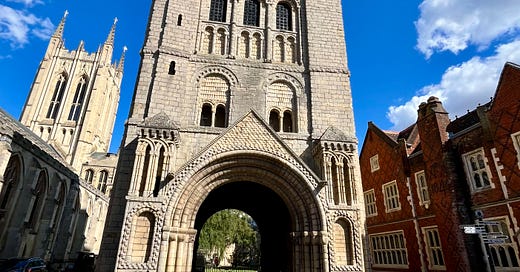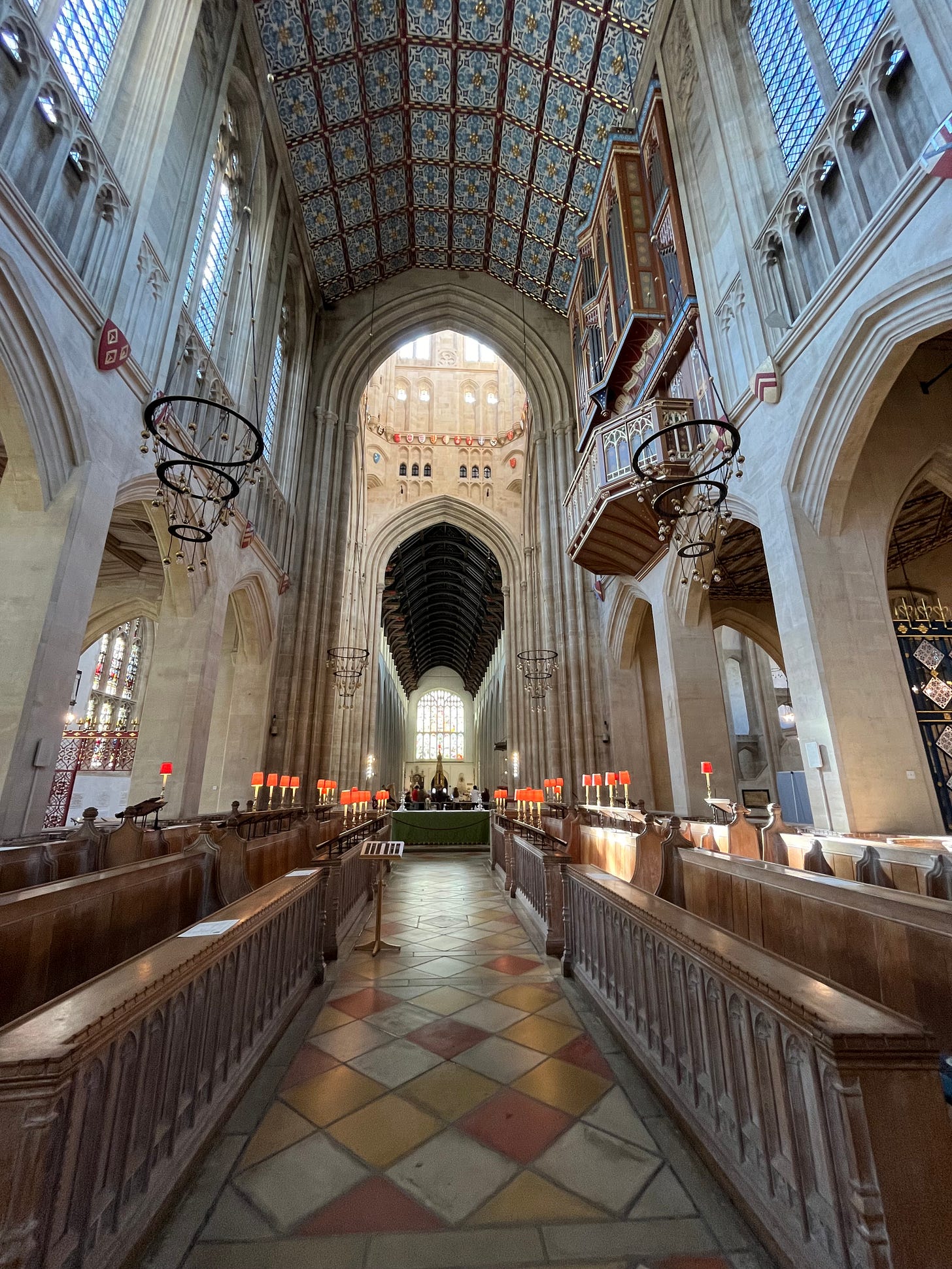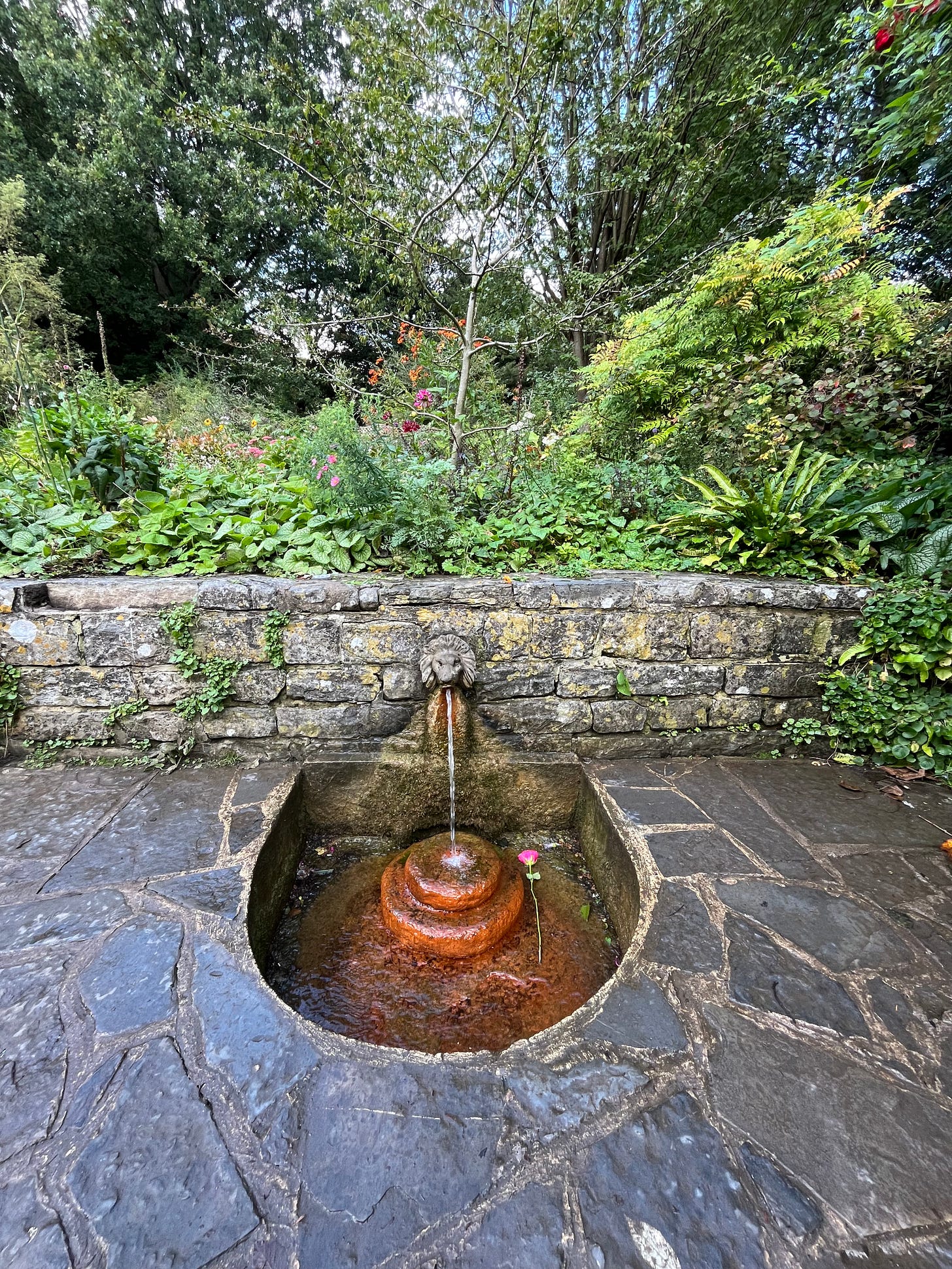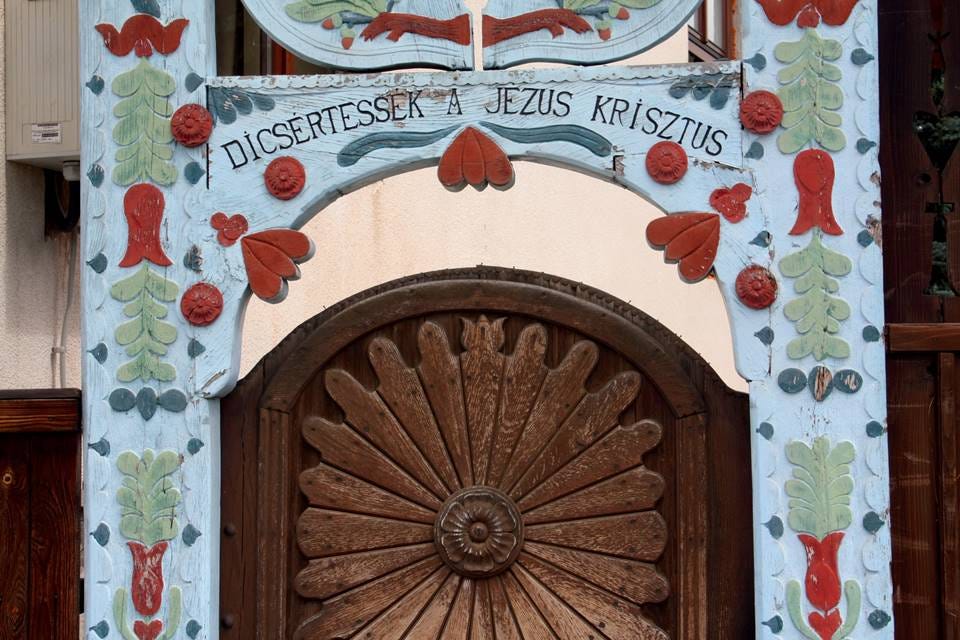In the lead up to the publication of my book, A Guide to Pilgrimage, on the 29th of October, I wanted to share an exclusive part of my book that never made it into the
final edit: My A-Z of Pilgrimage Paths and Routes. I have split it down into sections to make it easier to follow. This week is E - I and includes some pictures I took when visiting St Edmundsbury Cathedral whilst pilgrimaging around Suffolk recently. Enjoy - and, as always, I’d love to know of any additional sites you would recommend, please comment below.
This is an A-Z of pilgrim routes; it is by no means comprehensive, and I have not been on all of the routes personally. I have, however, tried to include a personal note on as many as possible, both from myself and from people who have walked these paths. These chosen paths are ONLY meant as a way of inspiring you to research and choose a route that appeals to you, personally. I have tried to be as encompassing and as international as possible, but there are bound to be some I have not included either because I did not know of them, or felt they were somewhat repetitive with other routes. Some of paths and routes are not considered pilgrimages, but I believe this is open to interpretation and one size doesn’t fit all.
E
St Edmunds Way, England.
This is a well-established Christian pilgrim route, of 72 miles from Manningtree in Essex to Brandon in Norfolk, following the river Stour and passing through Bury St. Edmunds. The full pilgrimage takes approximately 8 days although a shorter 2-day route from Thetford to Bury St. Edmunds has become more popular in recent years. The geography is relatively flat, making it more manageable than other established pilgrimages.
I recently visited St Edmundsbury Cathedral whilst on a pilgrimage to Suffolk.
St Edmund was the first patron saint of England. Edmund was martyred in 870AD by the Danes in battle for not renouncing his faith. To test him, he was tied to a tree and shot with arrows, then had his head chopped off. This was then reattached by a speaking wolf. His relics were miraculously transferred from his unknown site of martyrdom to Bury in the early 900s. King Canute built a stone shrine in 1020.
It’s estimated that 1000 pilgrims walk the route every year.
Please visit: https://britishpilgrimage.org/portfolio/st-edmund-way/ for more details.
F
St Finbarr’s Way, Eire.
Situated in West Cork and South Kerry the 35km path is spectacular, traversing three mountains and has views of the Carriganass walks and the beautiful Bantry Bay and the Sheep’s Head peninsula. Much of the way does not walk along roads and requires a good degree of fitness. It takes on average two days to complete the pilgrimage and although pilgrimage here is ancient, the paths were forgotten until a recent revival. Along the route are many ancient archaeological sites including Kealkil stone circle.
St Finbarr was the Bishop of Cork and abbot of a monastery that is now Cork city.
For more information please visit: https://livingthesheepsheadway.com/st-finbarrs-way/
G
Glastonbury, Somerset, England.
How could I write about pilgrimage but not include Glastonbury? In my opinion, one of the most spiritual places in the United Kingdom and certainly England. Glastonbury has been a pilgrimage site since at least medieval times when the abbey was one of the most important ecclesiastical centres of Christianity. Legend states that the abbey was founded by Joseph of Arimathea in the first century, the staff he thrust into the ground, that he had brought with him from Jerusalem grew into what is known today as the Holy Thorn, a relative of this tree used to stand proudly on Wearywell Hill but was unfortunately cut down recently. King Arthur and Queen Gwenevere were supposed to have been buried in the abbey, although there is speculation that this may have been a hoax created by the monks to bring pilgrims, visitors and importantly coin to the abbey. During the Dissolution the abbey was completely destroyed and famously the last Abbot, Richard Whiting was dragged up to the top of Glastonbury Tor and hung drawn and quartered there. You can still visit the abbey ruins, which is both peaceful and spiritual.
The Tor is probably the most famous landmark in Glastonbury and the high point seen for miles around the area. Glastonbury is situated in the Somerset Levels, an area of low land wet land that used to flood annually and would have made the Tor even more enigmatic. On top of the Tor is St Michael’s Tower which is now roofless, the church itself was destroyed by an earthquake in 1275 and rebuilt but eventually succumbed to Henry VIII’s dissolution. The Tor has seven terraces, and the reason for their creation is unknown – one possible explanation is that it is the remains of a labyrinth, Geoffrey Russell claimed that the classic labyrinth was found all over the neolithic world. This is, however disputed by Ronald Hutton who claims that labyrinths were not sacred in ancient times. The Tor was known as Ynys Yr Afalon by the ancient Britons and was believed to be the ancient isle of Avalon that Arthur was transported to after he died. It has also be suggested that the Tor might be the final resting place of the Holy Grail. During the 19th century there was a growing interested in Celtic mythology and Gwyn App Nudd, lord of the Underworld was associated with the Tor, which was supposed to be a gateway into Annwn.
Chalice Well known as the red spring and its gardens are situated on Chalice Hill and have been used continually for over two thousand years. The water from the well comes from deep within the Pennard sands and the red colour is caused by Iron Oxide and it is reputed to have healing properties. Beside the Chalice Well is the White Spring, enclosed in the Well House and its waters are white from calcite mineral.
This is just a very general overview of Glastonbury, there are many more sites and places of interests that I will leave to you to find and explore. I have been going here for many years for healing and renewal. It is all encompassing, and I recommend visiting.
For more information please visit: https://glastonbury.uk/
Gyergyószék Route, Romania
This traditional pilgrim route runs for 62 miles through Carpathian mountains from Praid in the basin to the Marian shrine at Șumuleu Ciuc, passing through many villages and churches. A priest called Istaven, more than 450 years ago, persuaded King János Zsigmond not to invade the local area and in thanks for this, a pilgrimage takes place every Pentecost.
Check out: https://100km.mariaut.ro/en/node/578
H
The Hajj
The Hajj is the annual Islamic pilgrimage to Mecca in Saudi Arabia. Mecca is the holiest city for Muslims, doing the Hajj is mandatory to the Islamic faith and must be carried out at least once in a lifetime by all adults who are physically able to do it.
Hajj means “Pilgrimage made to the Kaaba” (House of Allah) and is a long journey meant to cleanse the soul of the pilgrim, of sin. The rites carried out at Mecca include wearing a single piece of white cloth unstitched, walks anti clockwise many times around the Kaaba, kissing the black stone on the corner, then walk briskly seven times between the hills of Safa and Marwah. They must drink from the well of Zamzam, do a vigil at Mount Arafat, spends a night in the plain of Muzdalifa, and performs symbolic Stoning of the Devil by throwing stones at three pillars. Following this, a sacrifice of cattle takes place. This all happens over 5-6 days, from the 8-13th day of Dhu-Al-Hijja, the last month in the Islamic calendar. Following this is the international festival of Eid al-Adha.
Over 2 million people, mostly from outside Saudi Arabia, attend the Hajj every year.
There is much information available about the Hajj online and many book have been written about it. www.islamic-relief.org.uk is a good place to start.
Huangshan Mountain, China
The mountain range of Huangshan in Eastern China is renowned for its scenic beauty particularly its granite peaks. It is a UNESCO world heritage site. There are some 60,000 stone steps carved into the side of the mountain which are over a thousand years old. There are more than 50 thousand kilometres of footpaths, which provide access to more than 2,74 million visitors annually.
In both Taoism and Confucianism, Huangshan is one of the Five Great Mountains and in recent years pilgrimages have resumed, with hundreds gathering in temples and caves to receive sacred affirmations. The mountains are also sacred to Chen Buddhism and have temples to allow Buddhists to visit.
According to Chinese mythology the mountains were formed from the body of Pangu, who was the first being in the world, when he died.
The official website is:
https://hsgwh.huangshan.gov.cn/
(please note it is in Chinese.) or: https://whc.unesco.org/en/soc/2230
I
Isle of Wight Festival. U.K.
I imagine you are wondering why I have included a modern music festival in a guide to pilgrim sites?
Many people of different paths and none travel to festivals, music or otherwise, every year to achieve a state of enjoyment and peace through the music they hear. Sometimes the journey may be hard, and take a long time, they may be met with hardships and have to forgo many comforts to get to the festival. This sounds rather like a pilgrimage to me.
I have chosen the Isle of Wight Festival because it is one of the oldest modern music festivals in the world, it started at a small event in 1968, becoming a full-blown music festival in 1970, attracting 600, 000 people.
Many legendary musicians and sings have played there, including Bob Dylan in 1969, with John Lennon and Yoko Ono attending. Jimi Hendrix, The Doors and The Who headlined in 1070 and latterly Paul McCartney, Amy Winehouse and David Bowie.
Other UK music festivals include Glastonbury, Green Man, Latitude and Reading and Leeds. International music festivals include: Werchter Belgium, Midgardsblot, Norway, Burning Man USA, and Viva Latino, Mexico.
Check out the official website here:
J https://isleofwightfestival.com/
My book, A Guide to Pilgrimage is published on the 29th of this months with Moon Books.














Hello Thea...local mythology places the site of Edmund's death as a field in Hoxne, Suffolk, that he was captured hiding under a bridge...his original burial site is alleged to be Hoxne Priory - now Abbey Farm, a private house of Tudor origin which belongs to my friend Wilf White! Affectionately known now as "Wilf Hall", Abbey Farm is on Abbey Hill in Hoxne; my friend is Andrew E W WHITE, known to all as Wilf (his third name is Wilfrid). He'd be delighted to talk to you if you'd like to know any more - do pm me if you'd like an email address for him. He's a fine scholar, so his input is top notch, but also the warmest, kindest, and most distractable old duffer one will ever meet. Like a witty walking museum who is blissfully unaware of how he ended up with this enormous number of friends! Truth is, I reckon we'd all fall apart a bit without our Favourite Old Git. 😍